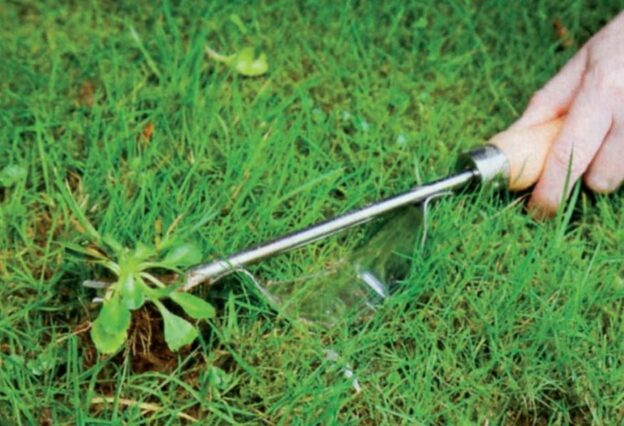There are hardly any gardeners who would like weeds in the garden. However, even if they cause a lot of trouble, it is not necessary to resort to chemical weed killers immediately. Weeds can also be eradicated in a gentler way. This will not harm the surrounding animals.
If you value a garden in harmony with nature, you should avoid using synthetic chemicals. In any case, the use of such materials on paved or sealed surfaces, e.g. garage entrances, as harmful substances can penetrate groundwater.
Dandelions, nettles, and other weeds are undesirable guests in gardens because they can deprive ornamental plants of nutrients, light, and water. They are true survival professionals and are able to adapt perfectly to the current conditions. It is usually easier to prevent weeds from planting if you know what kind of soil they like. For example, nettles like soil that is high in nitrogen and rich in nutrients, buttercups like stagnant moisture, and the bell stay in compacted soil.
In general, weeds are classified according to their mode of propagation – roots or seeds. To control weeds effectively and over the long term, you need to know which weed belongs to which species.
Seed-knitting weeds
Seed-knitting grasses usually bloom in summer. But in this way, they produce so many seeds that they can germinate from the ground for several years after that. When digging the ground, they are lifted back to the surface and germinate. When the weeds that knit the seeds are cut as they bloom, they start to grow even stronger, so the gardeners who do so get the exact opposite result than expected. In the spring, it is best to wait 2-3 weeks before sowing or planting.
You will then be able to remove most of the weeds that have germinated by then. Simply loosen the soil with a hand cultivator and remove unwanted incidents. If they haven’t bloomed yet, they can even be composted and used for a good purpose. Examples of typical seed-bearing weeds are three-leafed weevil, glaze, pigeon, and narrow-leaved plantain.
Weeds propagating by roots:
Weed-propagating weeds first spread underground at the roots and reproduce much less by seeds. If you leave at least a little root after grubbing them up, the grass will germinate again quickly.
Unlike seed-propagated weeds, root-spreading weeds cannot be placed in a compost pile because their roots are not destroyed well enough during the composting process. Examples of typical root-propagating weeds are annual grasses, dandelions, and nasty bellflowers.
To avoid the need for chemical weed killers, we recommend using old and proven methods such as uprooting, mulching, or heating. Weeding by hand is not always practical, especially if there are many of them.
Weeds with superficial roots are easily uprooted. According to the principle that “nobody grows where there is no light”, mulching is a good way to control weeds. If the soil is covered, weeds cannot develop properly. Peeling is also an effective way to kill weeds. This is especially useful where it cannot be accumulated. However, this should only be done by experienced gardeners, as otherwise soil organisms may be harmed. The heat lasts just a few seconds, but completely destroys weeds in just a few days.
Remember, not all weeds are bad. Among the weeds are the so-called “pioneer plants” – dandelions and soil mosses. Their strong roots aerate the soil and pump nutrients from the lower soil layers, allowing other plants to grow later in the area.
Many weeds are an important food source for insects and birds. Therefore, you should always think carefully about whether weeds are really causing problems, and if so, in which places so that you can take targeted action in the right places.
